Fans of Gli Azzurri were in dreamland throughout the 2022/23 campaign, having strolled to their first Scudetto title in 33 years by a whopping 16 points. It encapsulated a remarkable season under the tutelage of Luciano Spalletti, who propelled his side to glory with inventive and explorative tactics designed to get the best out of his squad. With a target on their backs heading into the current season, fans of Napoli were desperate to see how they would react and build upon such a successful moment in club history.
The reality of their title defence has been incredibly bleak, with the loss of key personnel resulting in what can be described as an incredible fall from grace in a matter of months. At the time of writing this article, Napoli currently find themselves sitting in ninth place, a mere seven points away from Champions League qualification, with little belief that they can right their wrongs and taste any form of achievement this year.
With Spalletti resigning at the beginning of the season, the contentious appointment of Rudi Garcia was met with great disdain, having just returned to Europe from an unsuccessful spell in Saudi Arabia with Al-Nassr. His reign in Napoli was over before it began, and now Walter Mazzarri has returned to Naples to pick up the pieces after over a decade away.
This tactical analysis and scout report will begin to highlight some of the critical issues that have derailed Napoli’s season and have caused such a managerial carousel. With a clear desire to change tactics despite pressure from the ownership, this analysis will begin to identify how Mazzarri can salvage a positive end to the campaign, with European places not completely out of the picture.
The loss of Kim
It can often be regarded as a bit of a bold statement when suggesting the loss of a single player has contributed to such unrest within a football club. However, the loss of Kim Min-jae has certainly been a hammer blow — and one which Napoli have failed to account for thus far. After an incredible debut season which saw him rightfully earn the status of Serie A defensive MVP, Kim was snapped up by Bayern Munich this summer after activating his €50 million release clause.
The South Korean colossus has left a considerable role to fill in this Napoli backline; he was often regarded as a one-man army which carried Napoli to glory. His progressive play was a crucial part of Napoli’s build-up play and attacking threat, recording 4.99 progressive passes and 5.93 passes into the final third per 90 in the Serie A. His defensive statistics were equally as impressive, with the defensive stalwart achieving an 86.2% success rate when tackling opposing dribblers and asserting his aerial dominance with 2.69 aerial duels won per 90.
This has caused a headache for both Garcia and Mazzarri during their tenure at Napoli this season, having failed to find a cemented partnership in central defence. Brazilian central defenders Natan and Juan Jesus have had their share of the minutes, but neither come close to emulating Kim’s success as the left-footed option. Having lost “the best centre back in the world”, as titled by his former manager Spalletti, Napoli’s systematic flaws have been illustrated with defensive numbers declining as a result.
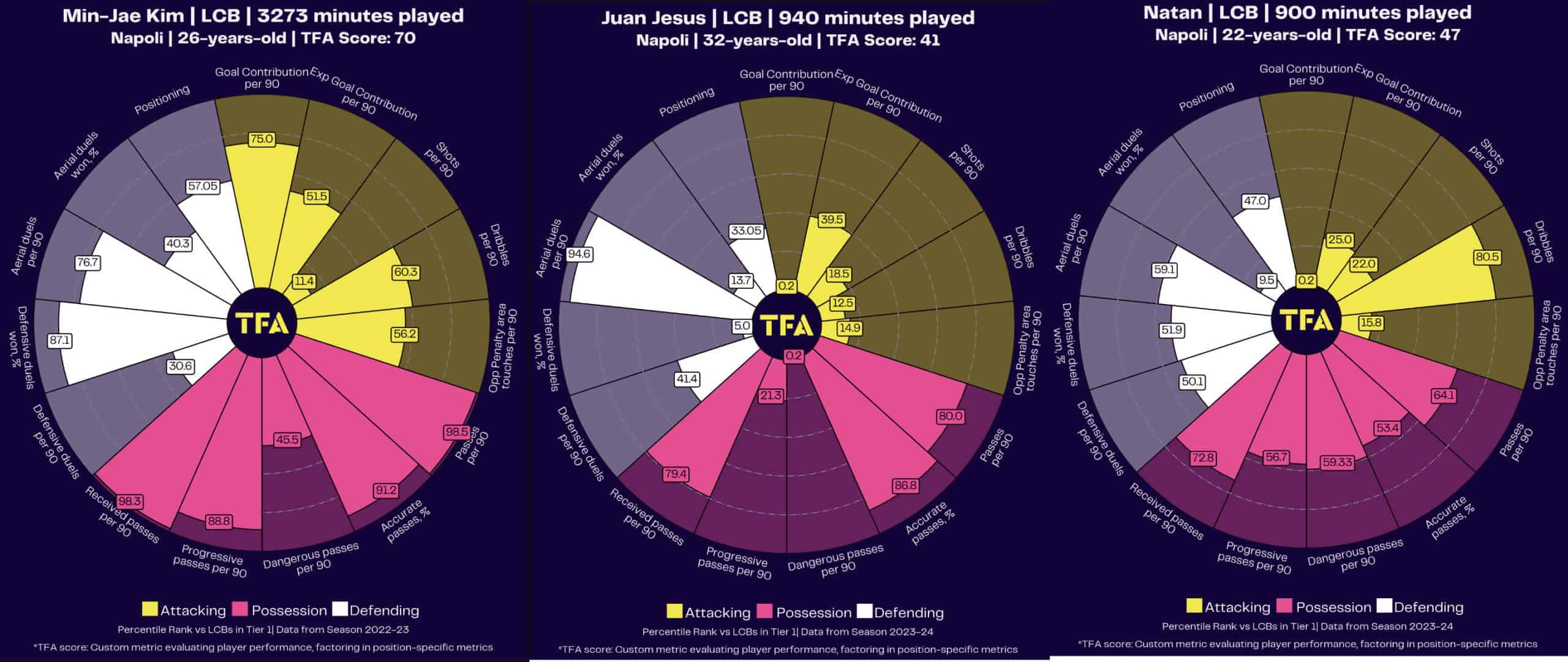
Whilst their goals conceded figure of 1.17 per 90 doesn’t appear disastrous, when compared to the 0.52 and 0.62 of Inter and Juventus, respectively, it is a clear indication of why their title defence will probably end with a whimper.
The appointment of Garcia
When Rudi Garcia was announced as Spalletti’s successor to begin the 23/24 season, it failed to spark the excitement and anticipation within a fanbase looking to build up a historic title win. The Frenchman resembled an unambitious option, which Napoli’s president, Aurelio De Laurentiis, had previously stated became one of his first choices due to his favoured 4-3-3 formation. The reality of the matter was that Garcia’s system was much weaker than that of Spalletti, lacking the tactical flexibility and positional freedom that they previously utilised.
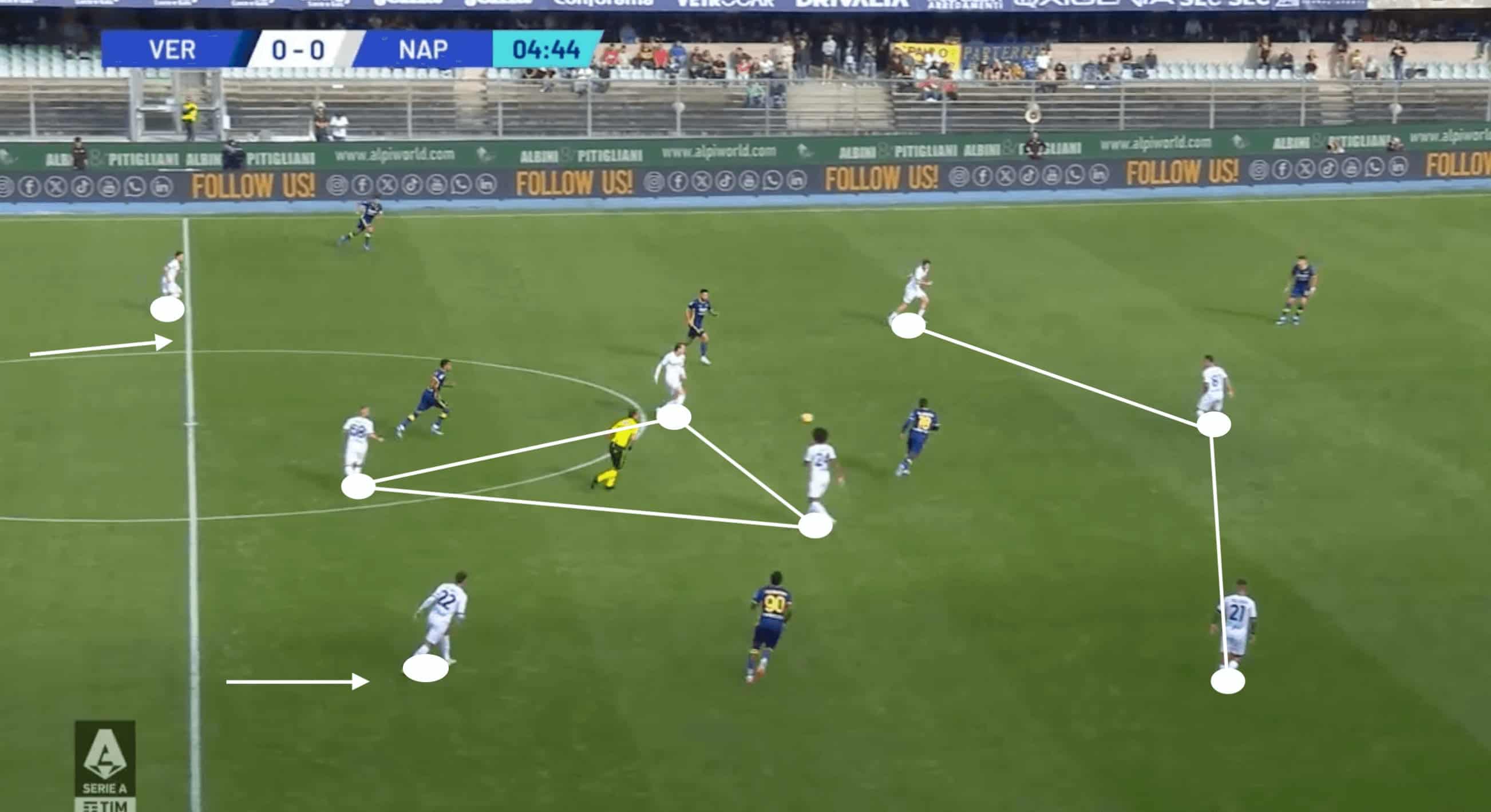
A combination of loss of personnel and tactical decline has resulted in a weaker showing of defensive organisation, with the opposition having increased freedom between the lines and more time to operate.
Napoli have been a victim of issues with their verticality up and down the pitch, with a lack of compactness between their midfield and defensive lines. The advancement of their midfield line creates moments of vulnerability when caught out in transition, with too many bodies committed forward, resulting in huge gaps for midfielders to roam.
In Garcia’s final match in charge at home to Empoli, the away side were able to regain possession and spark a quick counter. The damning element of this moment for Napoli would be that Empoli were able to progress forward with minimal opposition pressure in a game that was still all to play for. The game ended with a loss, epitomising their poor start to the season and ultimately forcing the hand of the ownership to end Garcia’s nightmare in Naples.
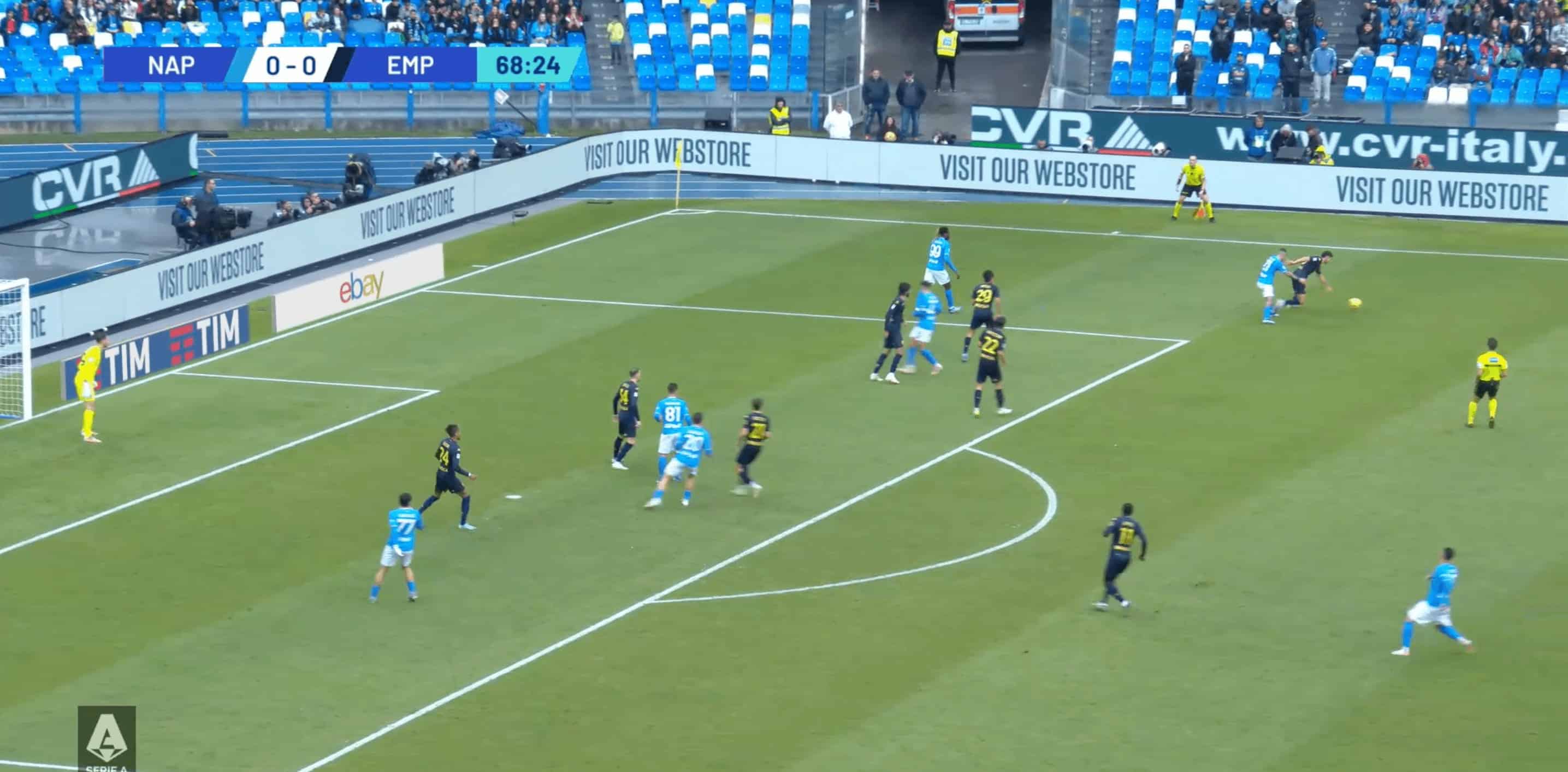
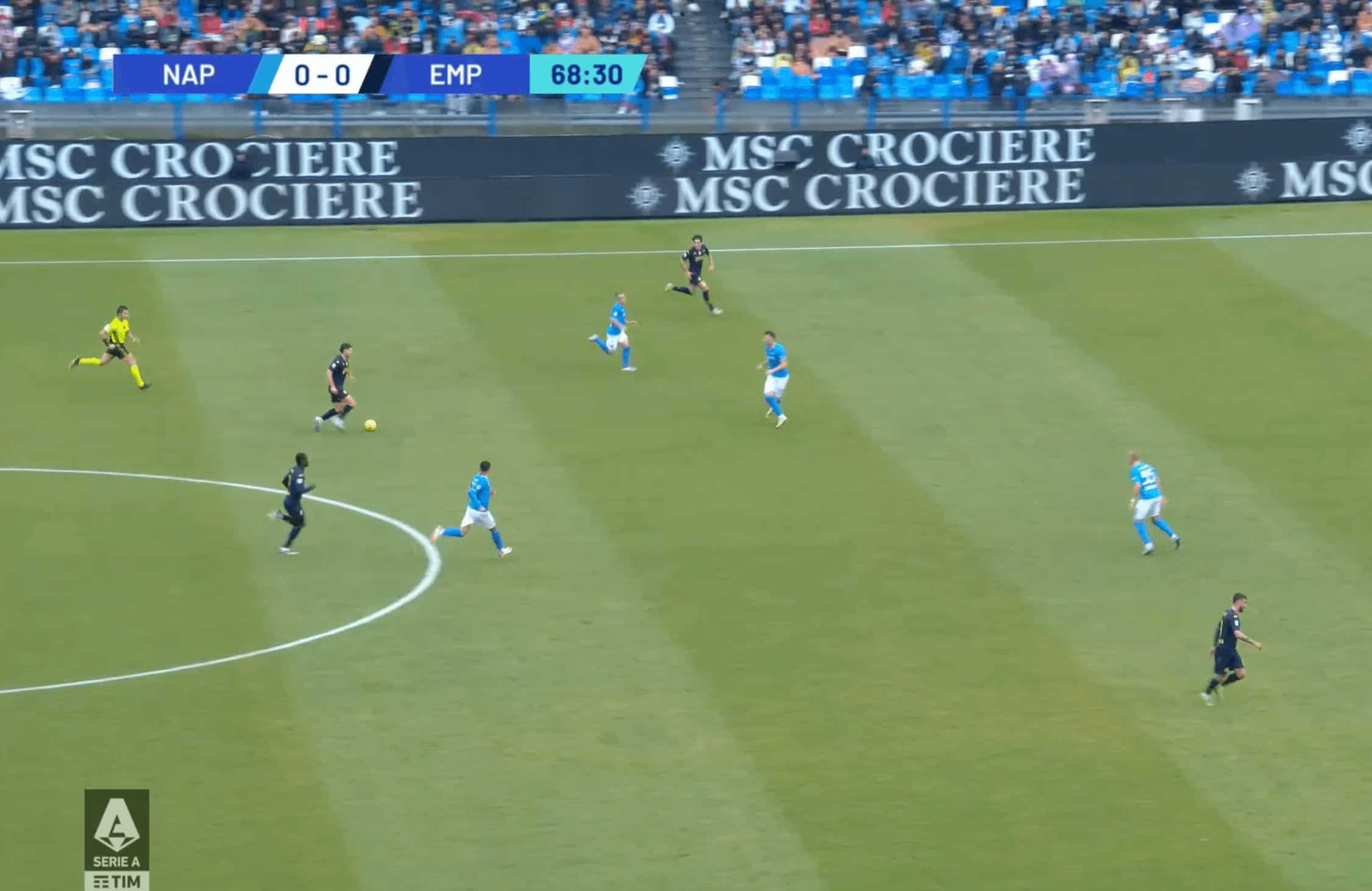
Disjointed attacking play
A key aspect of their title-winning success was the energetic attacking partnership of Khvicha Kvaratskhelia and Victor Osimhen, but their attack has been observing clear regression and underachievement. During a season marred by bouts of injury and a lack of club harmony behind the scenes, the winning formula previously built has certainly been sputtering in front of goal. The moments of magic from the Georgian winger dubbed ‘Kvaradona’ by the Napoli faithful have been minimised by increased defensive attention, and the absence of Osimhen through injury and international commitments has come to a detriment.
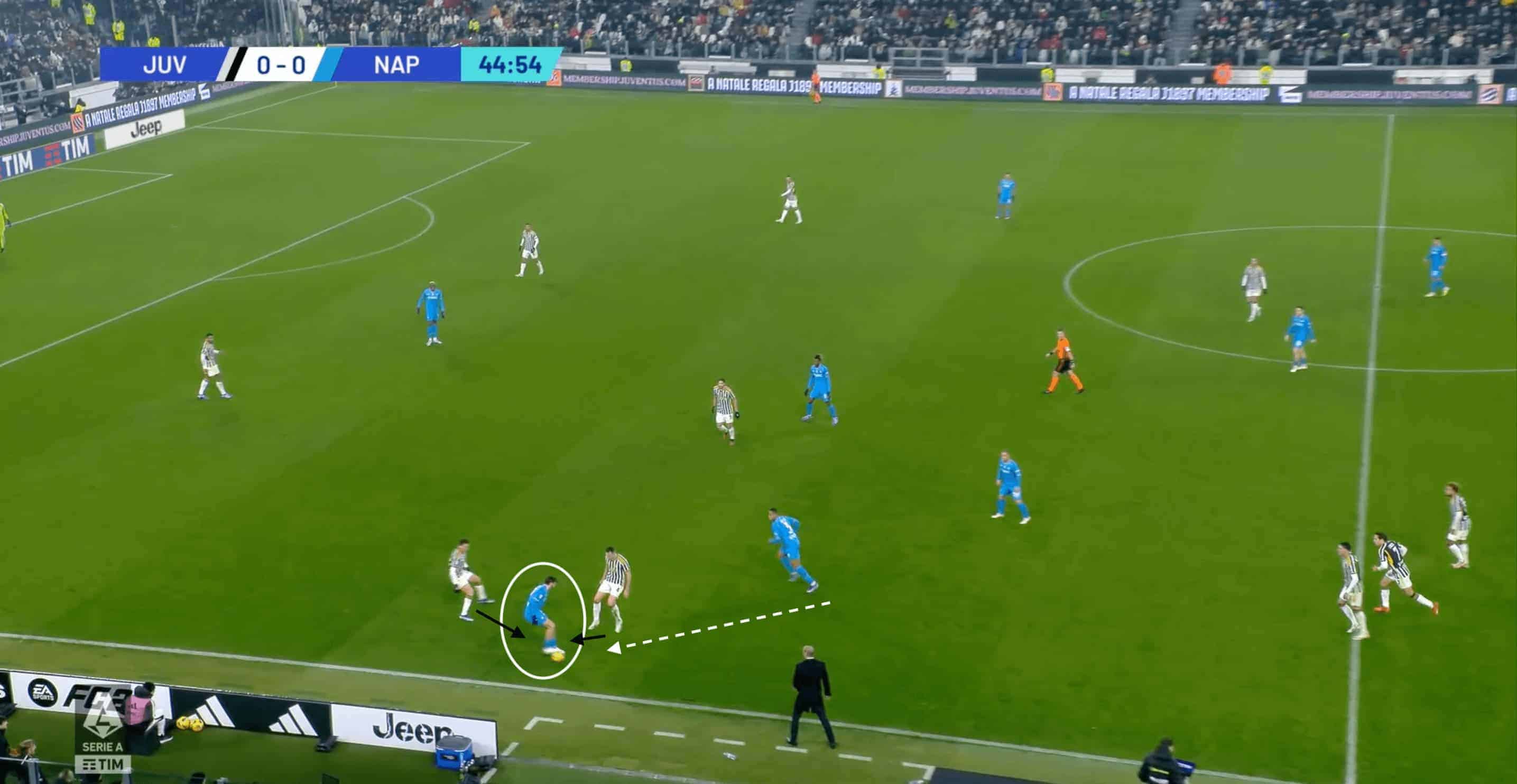
One of the key reasons for their attacking staleness has been highlighted by new manager Mazzarri, who has suggested they fail to be as progressive on the left side of defence. This, in turn, allows the opposition to place increased focus and double up on marking the electric Kvaratskhelia, nullifying Napoli’s one bright spark.
Implementing Mathias Olivera has been one of the ways Napoli has looked to bypass this issue, with his progressive nature creating a problem for the opposition going forward. His attacking presence and ball-carrying ability allows Kvaratskhelia to see less pressure, often darting wider to allow the Georgian winger to drift inside on his favoured foot.
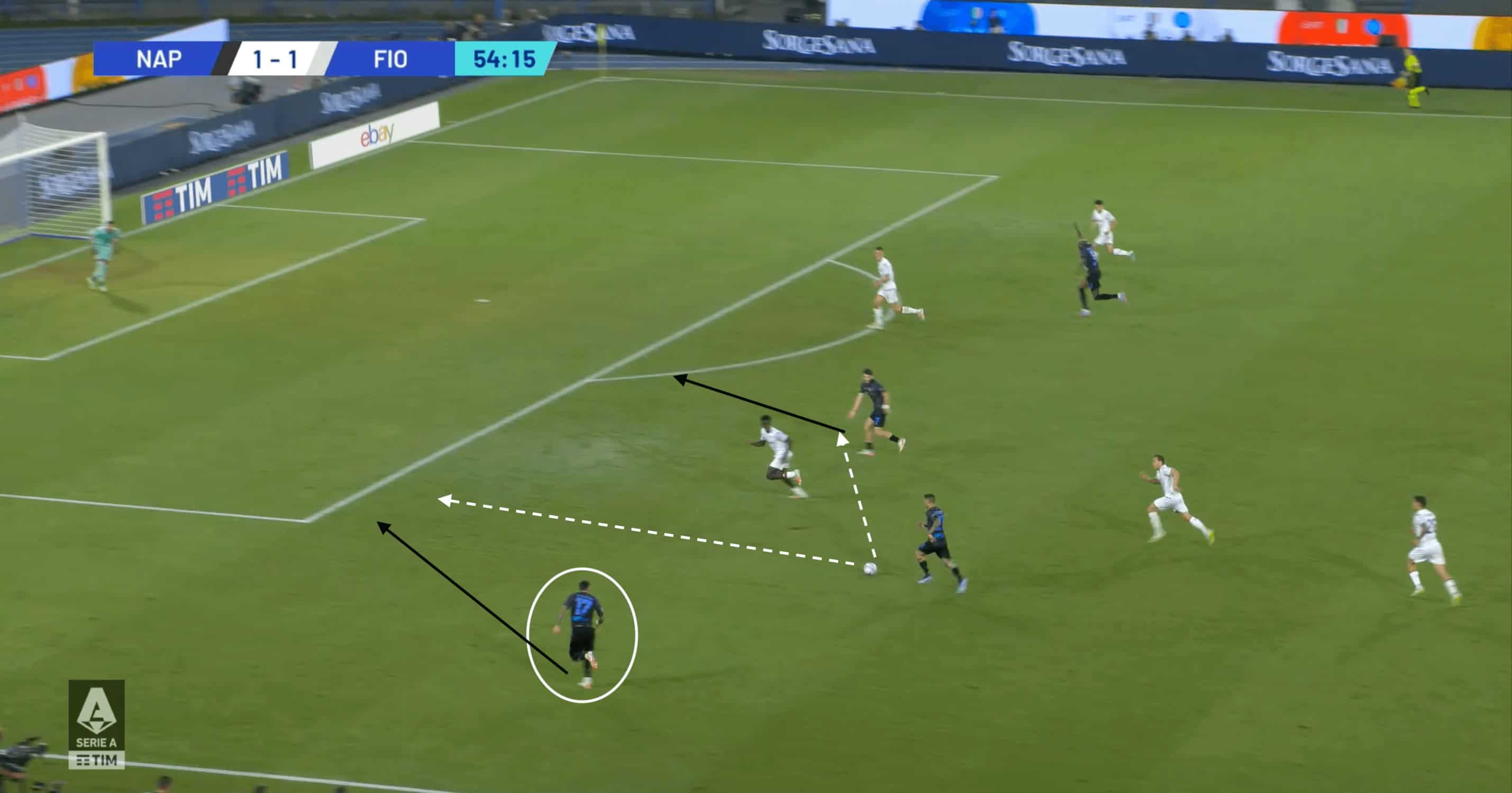
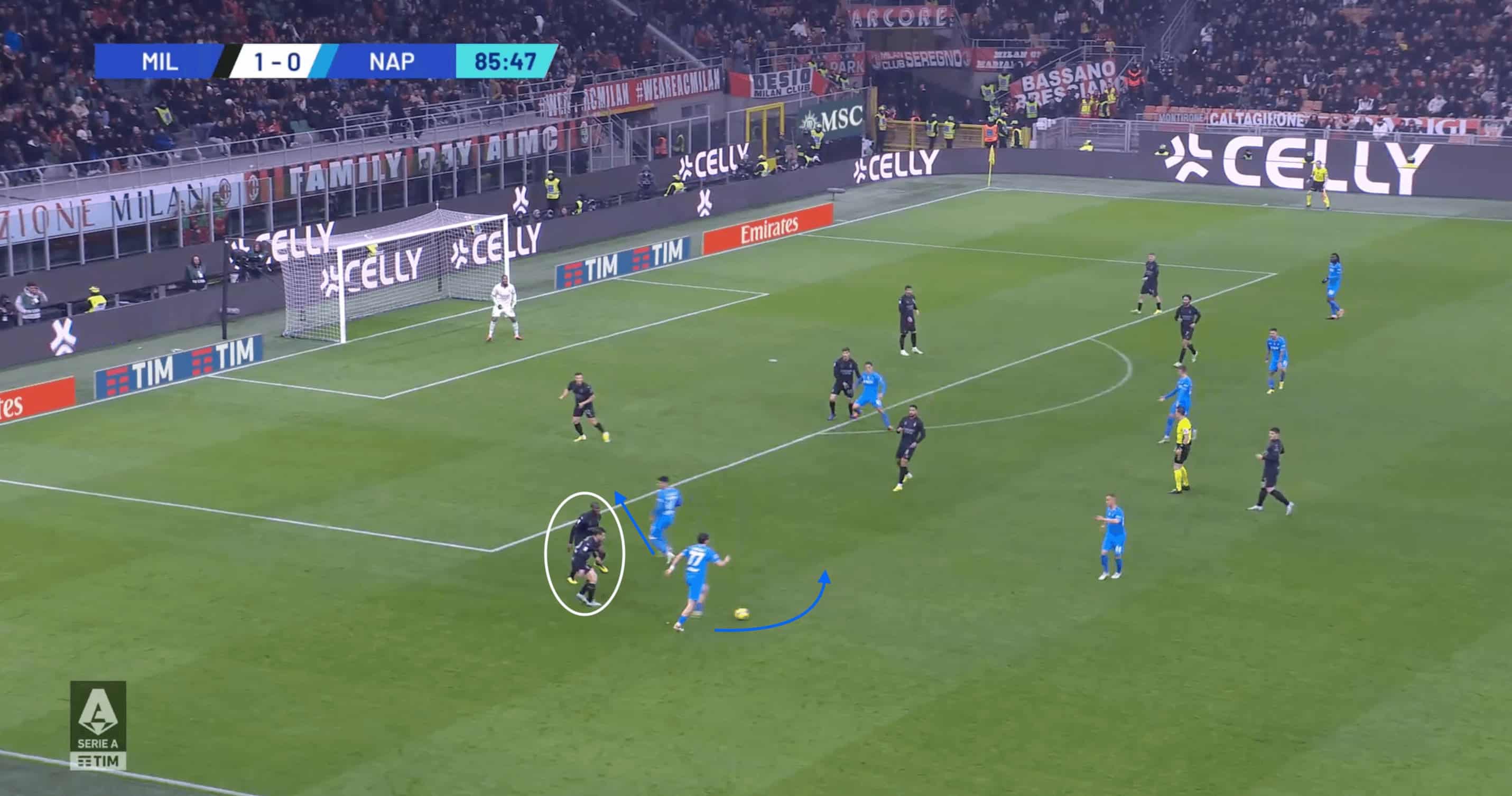
With the Uruguayan full-back missing 14 games this season through a knee injury, Mazzarri has had to tinker with different roles and players- ultimately failing to find a long-term solution with a successful outcome.
The current situation doesn’t appear so bad when observing Napoli’s attacking numbers. Their expected goals figure of 36.6 places them third in the league behind only Inter and Milan, with impressive numbers for both progressive passes (1032, 3rd) and progressive carries (487, 2nd).
For all their progressive play, it would appear that they have truly struggled with the lack of offensive consistency and seen a weaker output as a result. Napoli’s non-penalty expected goals per shot stands at 0.09, placing them slap bang in the table- not the desired effectiveness when looking to challenge at the top end of the table.
The most damning stat would have to be their npG-xG (non-penalty goals – expected goals), with a figure of -5.0, placing them 19th out of the 20 sides in the Italian top flight. When comparing this to a league-best +10.2 in the previous campaign, it begs the question of whether an element of luck crept into play last season or have they just been so underwhelming since Spalletti departed.
Mazzarri mixing things up
Since Walter Mazzarri returned to Napoli in November, he has begun introducing an aspect of tactical flexibility and varied formations to right previous wrongs. A switch to the 3-4-3 has come as a bit of a surprise, primarily due to the fans and players having grown accustomed to the traditional ‘Napoli 4-3-3’.
This switch has had its share of advantages, one of which being that with more players stretching the opposition in the wider areas, Napoli’s wingers have been less isolated, and situations arise where moments of defensive confusion create meaningful scoring opportunities. One of the more positive results during his short tenure was when they emerged victorious in a 3-0 beating of Fiorentina.
The increased defensive support allowed left central defender Juan Jesus to foray forward, making an underlapping run and becoming an essential passing outlet for the left wing-back. After a quick interchange with Kvaratskhelia, Jesus had practically strolled through the Fiorentina midfield to tee up Simeone and grasp control of the tie.
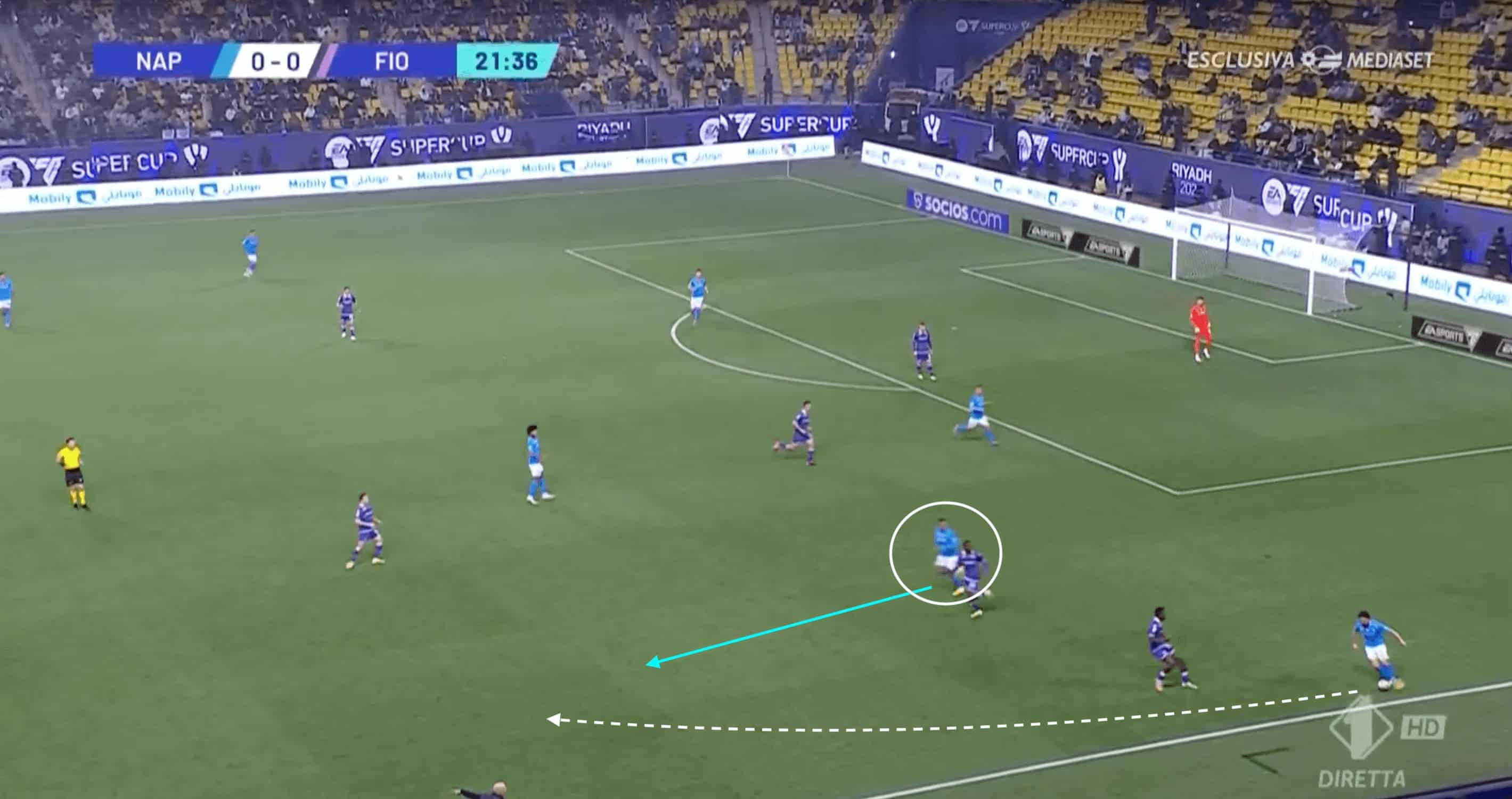
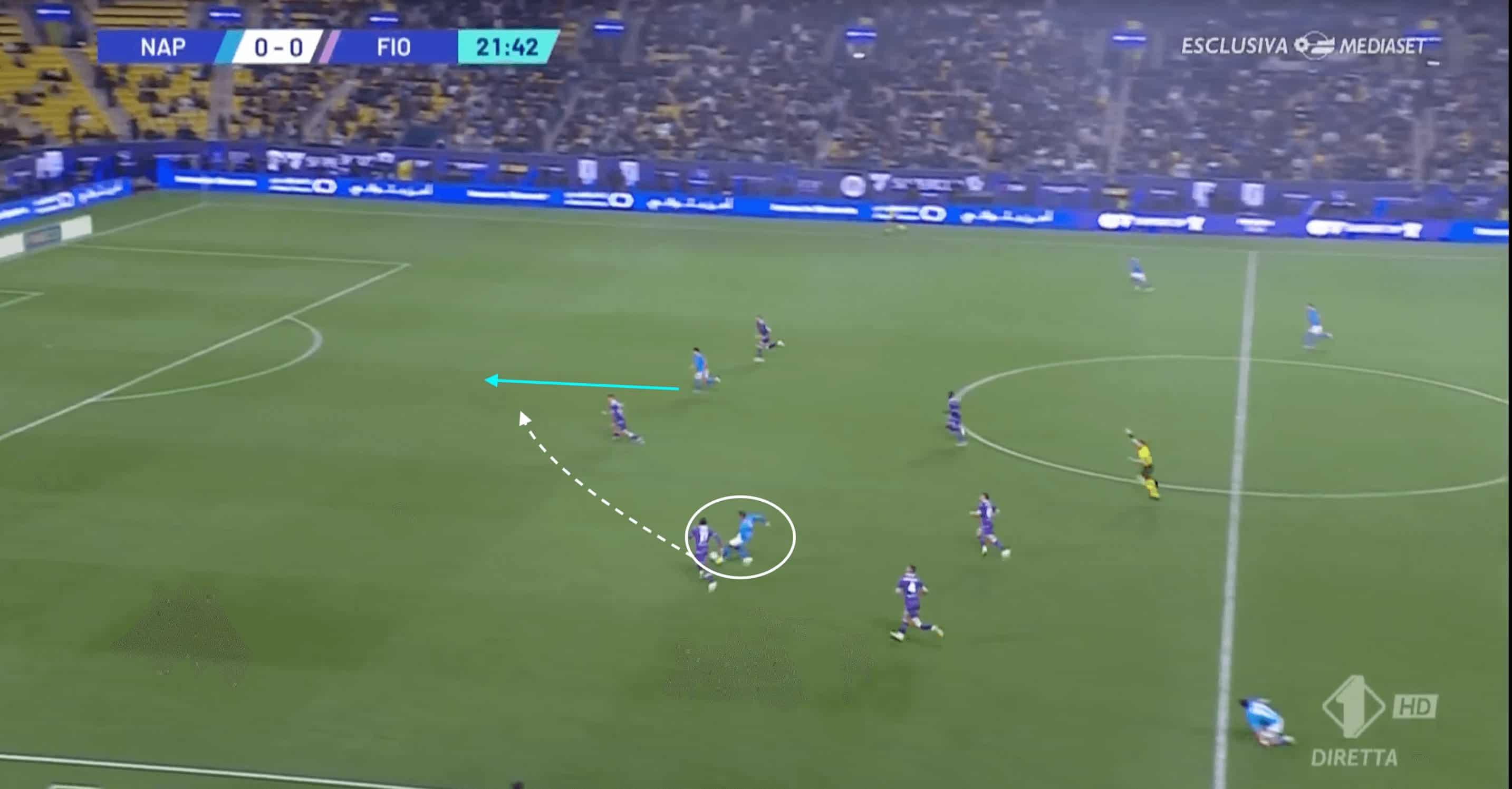
On the other hand, one disadvantage of the Mazzarri 3 at the back would be that it can be far too naïve and invites too much pressure, something that has proven fatal against elite opposition.
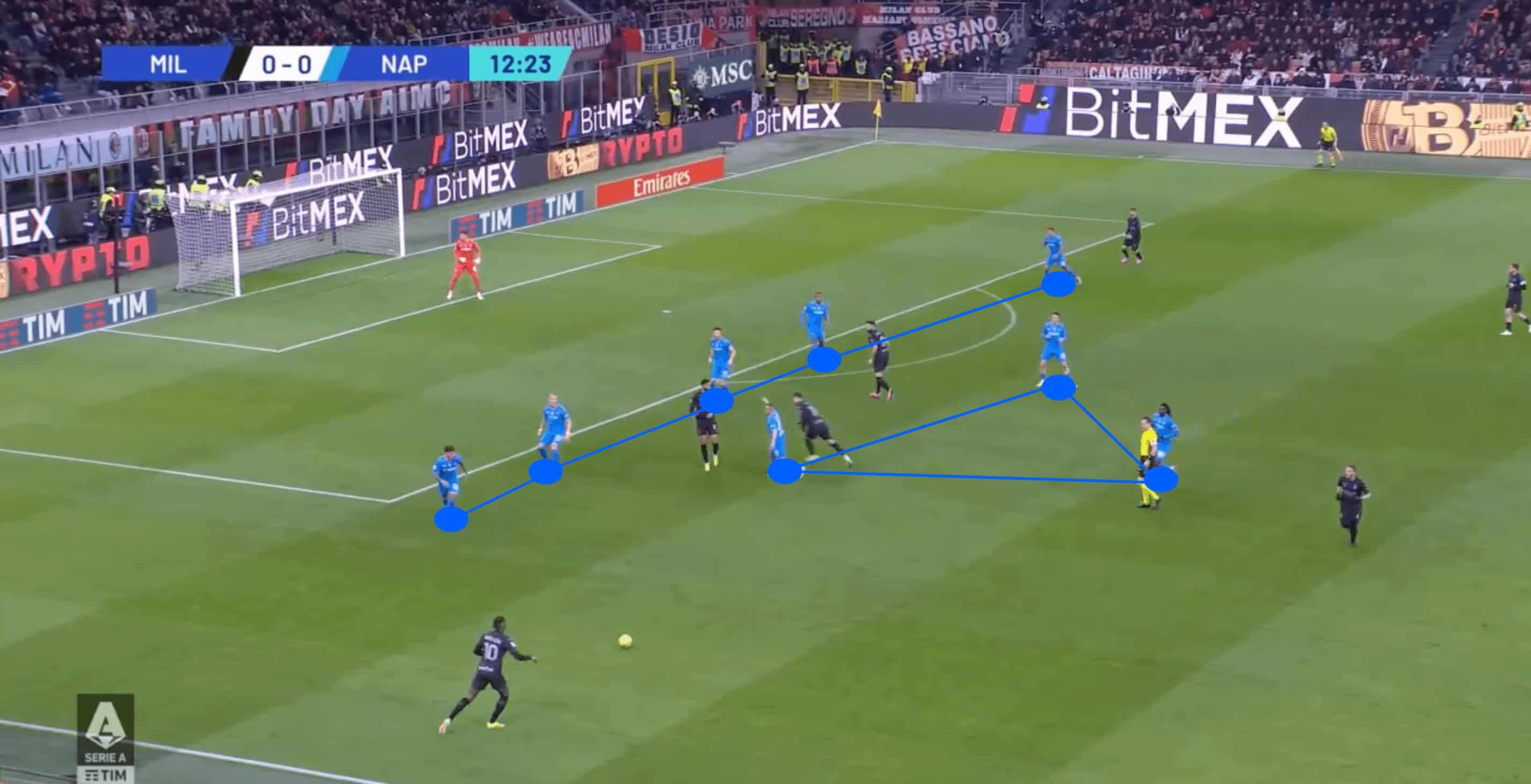
When starting in the 5-3-2 against Milan, Napoli proved that despite having increased numerical superiority in the defensive line, lapses of concentration and individual mistakes could undo all the positive work in an instant. With Di Lorenzo jumping out to press, this forces the defensive line to shift across and cover the vacated space.
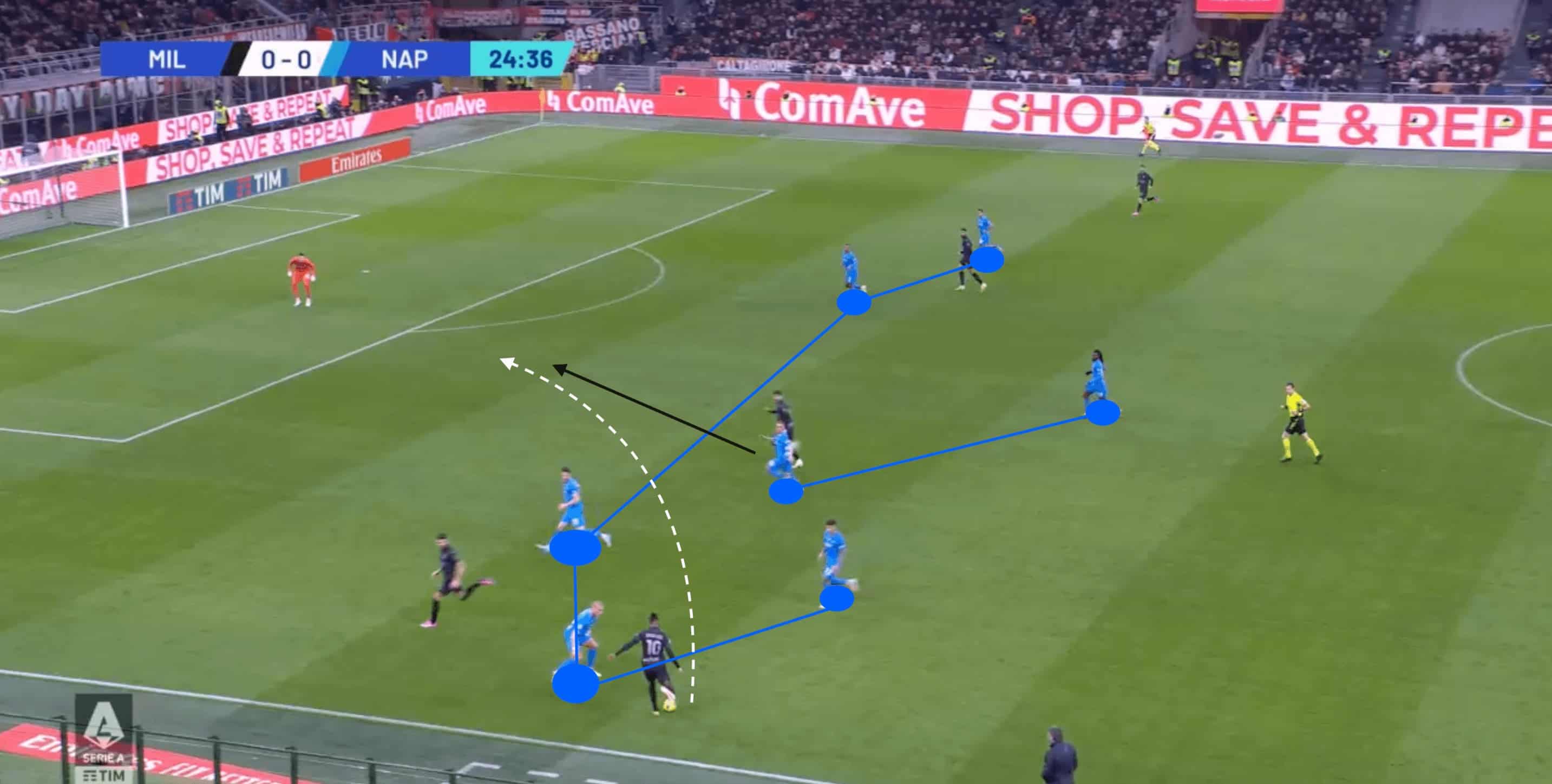
The marking assignment for Theo Hernandez’s surging run was left to central midfielder Lobotka, who was unable to match the pace of the Frenchman as he broke through the lines to slot home past Gollini. After the interval, Mazzarri reverted back to the 4-3-3, allowing his side to gain a foothold and appear more promising in their search for a winner.
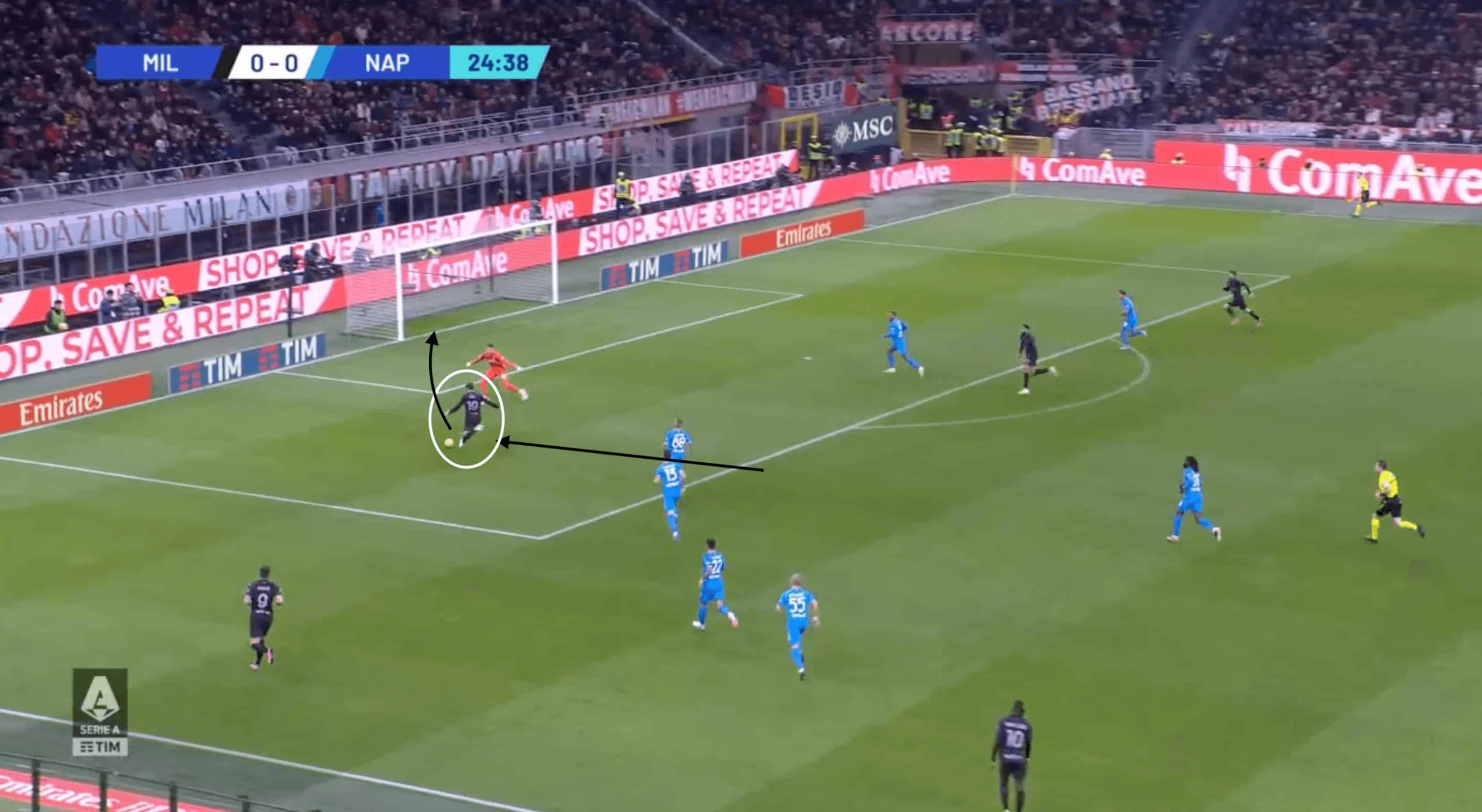
The switch in formation would appear to be a momentary effort to instil new ideas and spark a revitalisation for Napoli this season- but is the previous system too far engrained in their philosophy for another one ever to be as effective?
Conclusion
This tactical analysis has begun to scratch the surface as to what has truly gone wrong at a club celebrating a remarkable Scudetto victory less than a year ago. The switch of managers fails to imply any long-term goals from the Napoli hierarchy, with Mazzarri signifying a stop-gap appointment looking to stem the poor string of matches.
Whilst Napoli fans will still be optimistic about their chances of qualification for European competition and a knockout stage opportunity in the Champions League, these deep-rooted issues were simply masked by the brilliance of Spalletti.
The winning machine of last season seems to have faltered in his absence, and the future doesn’t seem too optimistic with star striker Osimhen heading towards the exit door in the summer window.

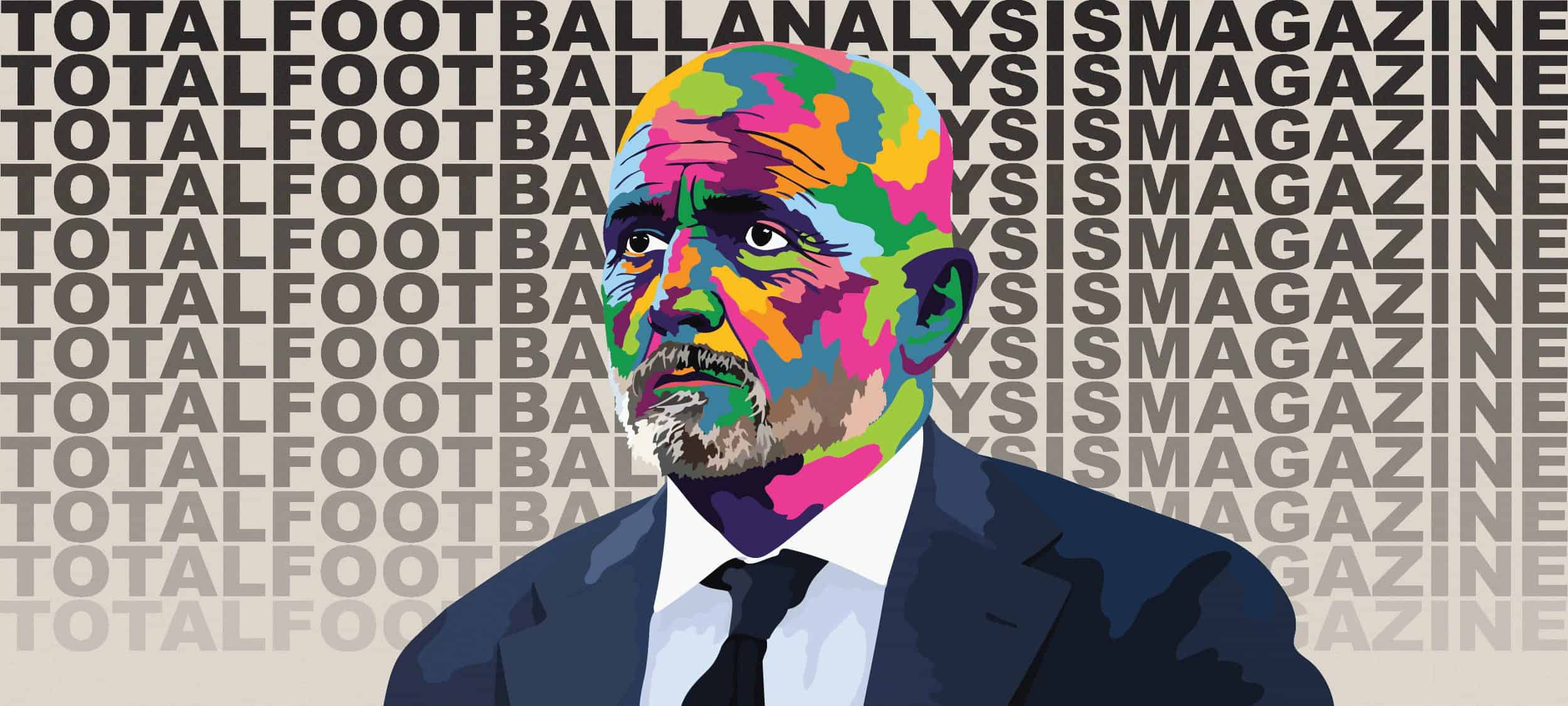



Comments